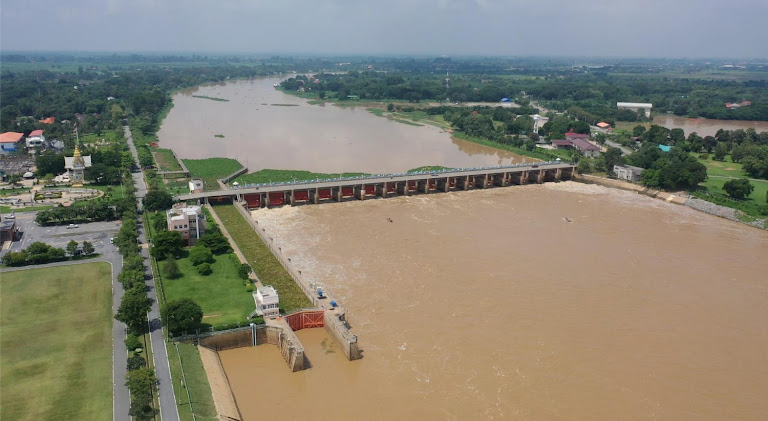Bangkok Grapples With Debt As Climate Change Worsens Flooding
Incomplete floodwalls and funding gaps worsen Bangkok’s struggle against rising tides, highlighting a need for proactive solutions and climate resilience.

Bangkok finds itself once again facing rising waters, a recurring crisis that lays bare the complex interplay of climate change, infrastructure deficits, and the persistent challenges of urban planning in the 21st century. The immediate trigger, as reported by the Bangkok Post, is a confluence of factors: increased water discharge from the Chao Phraya barrage due to continued rainfall in the upper basin, coupled with unusually high sea levels threatening low-lying areas. This isn’t simply a story about a bad week of weather; it’s a reflection of the systemic vulnerabilities inherent in a megacity built on a delta.
The current situation highlights the fundamental tension between short-term crisis management and long-term systemic adaptation. The Bangkok Metropolitan Administration (BMA) is, understandably, focused on immediate solutions: coordinating with various agencies, reinforcing “gapped barriers” with sandbags, and inspecting existing infrastructure. While these measures are crucial, they represent a reactive approach to a problem that demands proactive, systemic solutions. We see this pattern repeated globally: cities patching up weaknesses as disasters loom, rather than fundamentally rethinking their relationship with water and the environment.
One of the most telling details is the persistent presence of those “gapped barriers”—4.35 kilometers of incomplete floodwalls. These aren’t new problems; they’ve been ongoing for some time, suggesting budgetary constraints, bureaucratic hurdles, or perhaps a deeper political prioritization issue. The fact that these gaps are being temporarily reinforced with sandbags speaks volumes about the enduring challenge of completing large-scale infrastructure projects in complex urban environments. The completion of 2.58 km of permanent barrier sections in key locations like Si Phraya Pier offers a glimpse of progress, but also underscores the scale of the work that remains.
The problems are multifaceted. The Thai Meteorological Department’s warning of heavy rain in the North due to a passing monsoon trough indicates the interconnectedness of the issue. The problems facing Bangkok aren’t just those of local infrastructure. Rainfall patterns hundreds of miles away directly impact water levels in the Chao Phraya. The news article states that farmers have been advised to prepare for possible weather-related damage, highlighting the impact of these storms on the agricultural sector as well. The challenges can be broken down into:
- Upstream Water Management: The management of water resources in the upper basin is crucial to mitigating downstream flooding.
- Urban Infrastructure Deficits: The incomplete flood barriers are a glaring example of infrastructure deficits that exacerbate the impact of flooding.
- Climate Change Impacts: Rising sea levels and changing rainfall patterns are intensifying the risk of flooding in Bangkok.
- Inter-Agency Coordination: The effectiveness of flood response depends on seamless coordination between various government agencies.
These realities are further complicated by the interplay of the natural and the built environments. The fact that saltwater intrusion is a concern, alongside flooding, underscores the fragility of the delta ecosystem upon which Bangkok is built. This highlights a critical point: the need for holistic, integrated solutions that address not just flood protection, but also water quality, ecosystem health, and the long-term sustainability of the city.
The BMA is seeking funding for future projects, a key element in providing long-term solutions, but funding alone isn’t the solution. It requires a fundamental shift in mindset, moving beyond reactive crisis management to proactive resilience building. This means investing in early warning systems, improving drainage infrastructure, promoting sustainable land use practices, and engaging communities in flood preparedness.
The challenge for Bangkok is not just to build higher walls, but to build a more resilient relationship with water. This requires acknowledging the inherent vulnerabilities of its location and embracing a more adaptive and sustainable approach to urban development.
The future of Bangkok, and indeed of many delta cities around the world, depends on it. The immediate crisis will pass, but the underlying challenges will remain, demanding a comprehensive and sustained effort to build a more resilient and sustainable urban future.









